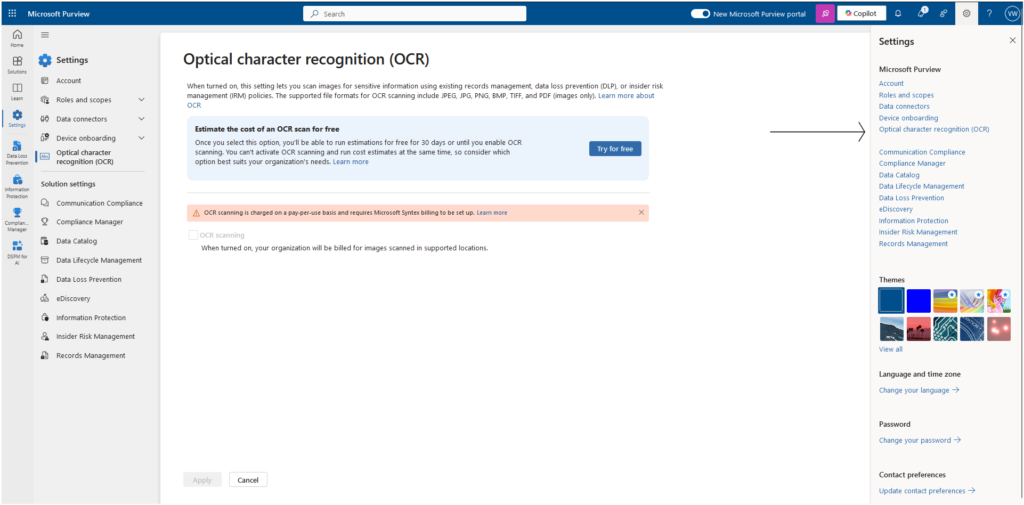Among all Microsoft Purview security solutions, there’s one that you absolutely must get right. If you don’t, your entire data security strategy could fall apart, no matter what other security tools you’re using.
This key solution brings together three basic but crucial tasks: finding your sensitive data, labelling it correctly, and keeping it safe. This solution is Microsoft Purview Information Protection (MIP), and it’s at the heart of how you protect your company’s data.

Why is MIP so critical?
Think of the Microsoft Purview’s Data Classification service as the system that helps all other security tools know what to do. Here’s how it works with different Purview tools:
Purview Data Loss Prevention (DLP):
- Works like a security guard that reads the labels
- If it sees a file marked ‘Secret’, it knows exactly what protection rules to follow
- For example: “This is confidential data, so don’t let it be shared outside the company”
Endpoint DLP (Devices) and Microsoft Defender for Cloud Apps:
- These tools check the labels whether you’re working on your laptop or in cloud apps like Workday, Salesforce, etc.
- They constantly ask “What’s this file’s label?” before allowing any action
- Then they make sure the right safety measures are in place
Microsoft Purview Insider Risk Management:
- This one’s particularly clever about using the labels
- It watches for unusual behaviour with sensitive data
- For example: If someone suddenly downloads 100 files marked ‘Highly Confidential’, it raises an alert
- It can then start extra monitoring or take other protective steps”
Microsoft Purview Data Governance (Data Map)
- This service uses MIP to help you map and catalog your structured data.
- It gives you the ability to apply consistent classification across your data estate. You can have a standardised label across your organisation.
- For example: “A ‘Confidential’ label means the same thing everywhere, making it easier to manage and protect”
Third party services using MIP
Even third party servicse leverages on the MIP data classification services.
Trellix integrates it’s DLP network appliance with MIP: https://docs.trellix.com/bundle/data-loss-prevention-11.11.x-product-guide/page/UUID-5d61c924-38ac-3cb9-fb84-17596363740f.html
Crowdstrike leverage Microsoft Purview Information Protection labels (page 5 of 7): https://www.crowdstrike.com/wp-content/uploads/2023/12/A-Modern-Approach-to-Confidently-Stopping-Unauthorized-Data-Exfiltration_WhitePaper.pdf
zScaler and Egnyte can import MIP labels as part of it’s DLP: https://help.zscaler.com/downloads/zscaler-technology-partners/data/zscaler-and-egnyte-deployment-guide/Zscaler-Egnyte-Deployment-Guide-FINAL.pdf
Microsoft Purview Information Protection is the foundation that your entire data security and governance strategy builds upon. Without a properly planned and implemented MIP deployment, even the most sophisticated Purview solutions won’t deliver their full value. Think of it as building a house – you need to get the foundation right first.
As your organisation grows and your data landscape becomes more complex, your MIP strategy needs to evolve too. Regular reviews of your classification labels, updating sensitivity rules, and fine-tuning your protection policies aren’t just good practice – they’re essential for keeping your data secure and compliant.









